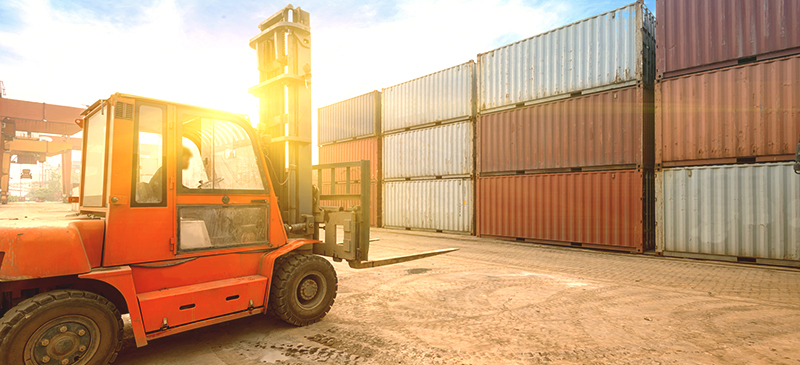Non-Road Mobile Machinery
Non-Road Mobile Machinery
The emissions legislation on non-road mobile machinery (NRMM) covers a huge range of applications. From small engines (less than 19 kW) to the biggest engine for road machines (above 560 kW).
For the small applications (less than 19 kW), many of these are powered by petrol engines, but for the larger applications, the majority uses diesel.
The emissions requirements for NRMM appear quite complex as they come into force in stages, with each stage phased depending on the application and the engine size.
Within each of these applications there are distinct application dates for different engine sizes, with the date for all engines placed on the market generally being one year after the date for new Type Approvals.
Stage IIIA was phased in:
- between 2010 and 2012 for constant speed engines,
- between 2005 and 2009 for propulsion engines for inland waterway vessels,
- between 2005 and 2009 for railcars and locomotives, and
- between 2005 and 2008 for other engines.
Stage IIIB was then introduced:
- between 2011 and 2013 for land-based application engines between 37 and 560 kW
- in 2011 for locomotive and railcar engines above 130 kW.
Stage IV was phased in:
- between 2013 and 2014, only for land-based application engines between 56 and 560 kW.
The Joint Research Centre of the European Commission is studying the emission performance of different types of machinery in real-world operation. Further information can be found at:
https://publications.jrc.ec.europa.eu/repository/handle/JRC119103
https://publications.jrc.ec.europa.eu/repository/handle/JRC117968
https://publications.jrc.ec.europa.eu/repository/handle/JRC117967
Emissions step Stage V was introduced on 1 January 2018 for engine type-approval and on 1 January 2019 for placing on the market of engines; except for land-based engines between 56 and 130 kW which benefit from a one-year delay and rail engines, both for railcars and locomotives, which benefit from a two-year delay.
The systems used are the same as for other heavy-duty diesel vehicles, with Diesel Particulate Filters (DPF), Diesel Oxidation Catalysts (DOC) and Selective Catalytic Reduction (SCR) as the main technologies. They can be used as original equipment or are available as retrofit systems for most equipment.
In addition to Europe-wide legislation, there are sometimes local regulations for construction equipment (as in Switzerland) or for equipment used in mines. There may also be incentives, requirements built into construction contracts (especially in city centres) or company internal policies that stimulate the use of these technologies. DPF, for instance, can be used for heavy-duty forklift trucks, where the power of a diesel engine is needed for the loads but operation within buildings is needed.
DPF also show their benefit on equipment used in confined construction sites, where the need for heavy construction equipment can at the same time meet the needs of public protection from exposure to fine particulates.
Supply of the urea for NOx removal by SCR is quite straightforward in such circumstances as a single supply can be set up for all equipment on site. The use of SCR technology on NRMM has largely developed since the introduction of Stage IIIB requirements, often offering machinery operators some benefits on fuel consumption and CO2 emissions reduction. SCR is also increasingly being applied to Inland Waterway vessels, such as those used on the Rhine, and to ships and ferries for international use. The latter ones are not covered by the NRMM regulations, but by the International Maritime Organization (IMO).

Tractors
The NRMM emissions Directive does not directly apply to agricultural and forestry tractors, but a parallel Regulation sets essentially the same series of requirements as for NRMM, again phased in by engine size.

Small non-road equipment
The emissions requirements for engines for small non-road equipment (less than 19 kW) form part of the emissions legislation on non-road mobile machinery (NRMM), with specific classes for small hand-held and non-hand-held equipment. The type of equipment is very varied.
Hand-held equipment includes:
- chain saws and portable sawmills,
- hedge trimmers, string trimmers and rotary tillers
- sprayers and vacuum equipment
Non hand-held equipment includes:
- portable generators and irrigation pumps
- ride-on and pedestrian-controlled lawn mowers, lawn sweepers and waste disposers
- golf carts
- welders and air compressors
Unlike light-duty vehicles, where the complete vehicle is tested, the emissions test for small equipment uses only the engine, as the same type of engine may be used in many different applications.
The engines used for small non-road equipment have similar constraints on size as do motorcycles – in many cases even greater constraints. It is, though, still possible to fit a catalyst and many are now in use on this type of equipment.